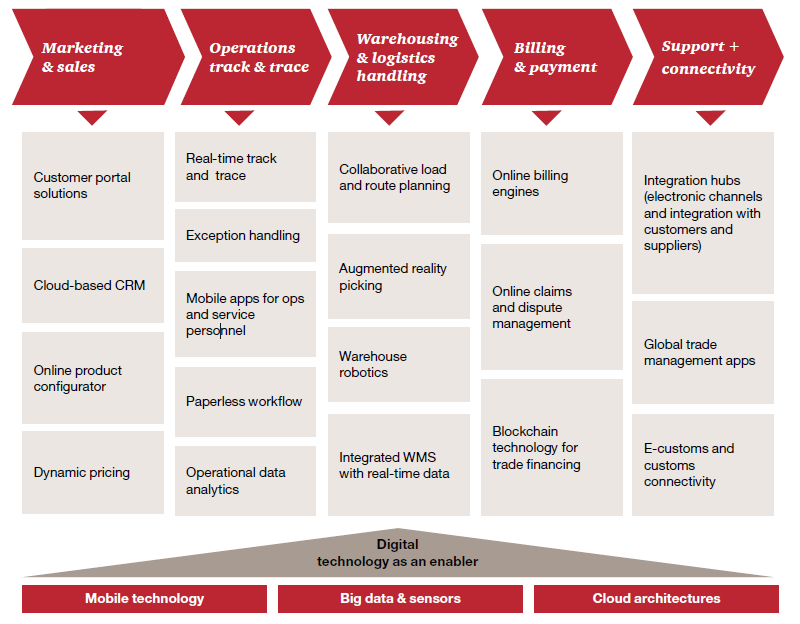In general, the logistics spend of developed economies is about 5-6% whereas in India, it is more than 13%. This demonstrates how unorganized and fragmented logistics industry is in India. The sector is under acute and growing pressure to deliver a better service at an even lower cost. With GST rollout, the regulatory hurdles are slowly reducing. Dedicated freight corridors, increased port connectivity and strengthening of infrastructure are also a positive development.
key challenges the sector is experiencing and may accelerate in future
- Customers of some sectors starting up logistics operations of their own
- New entrants are challenging the existing players by exploiting digital technologies and new uber style ‘sharing’ models, and they don’t have asset-heavy balance sheets or cumbersome existing systems weighing them down
- Companies providing last-mile delivery and forming normal JVs and partnerships at corporate level
Across the world, like other industries, transportation and logistics (T&L) is currently confronting immense change; and like all change, this brings both risk and opportunity. New technologies, new market entrants, new customer expectations, and new business models are reshaping the industry.
Fig: Digital Technologies impact on logistics processes
(Source: 2016 Global Industry 4.0 Survey – Industry key findings – PWC)
The future of Indian logistics industry lies ultimately in value propositions for the customer. Customer expectations are increasing greatly. They expect delivery of goods faster, more flexibly and at low delivery cost. This can be achieved by making maximum and intelligent use of technology, from data analytics, to automation, to the ‘Physical Internet’. This results in lower costs, improved efficiency, and the opportunity to make genuine breakthroughs in the way the industry works.
Recommendations:
Indian logistics sector should make some initiatives to reduce below issues.
- Storage and warehouse issues
- Middlemen meddling with operations
- No control over drivers and their hours of service
- Untimely deliveries
- Availability of transporters
Companies like Truckky, GoGoVan etc., are providing online platforms like Uber that connects users to hire a truck for full or part load with a network of thousands truck drivers for quick and prompt delivery option. Fleet owners/logistics companies can now join the platform and increase their capacity utilization.
Companies can employ 2 drivers for single vehicle to increase hours of service to 20 Hrs / Day and provide as premium services to customers who are willing to pay for faster delivery.
Companies can start tracking the vehicles, driver behaviour and vehicle health through fleet management systems. This enables the fleet owners to decrease the maintenance cost, improve the efficiency. On top of that companies can start using Business Intelligence / Data Analytics tools to understand what is happening and take corrective actions.
Indian logistics sector will continue to show robust 10-15% annual growth. But, to be competitive and relevant in future, fleet owners / logistics companies need to embrace technology, process and skill interventions. While acceptance is perhaps not an issue anymore, the marriage between technology and domain requirement needs to be resolved.

